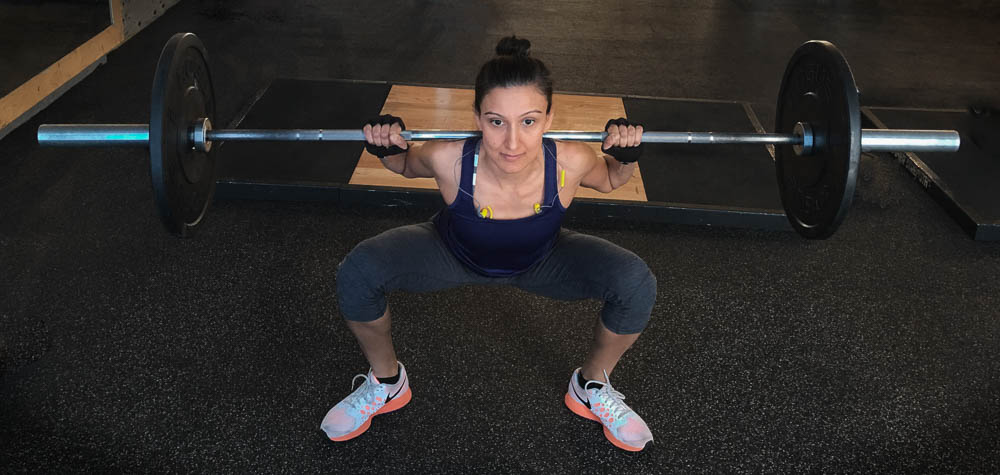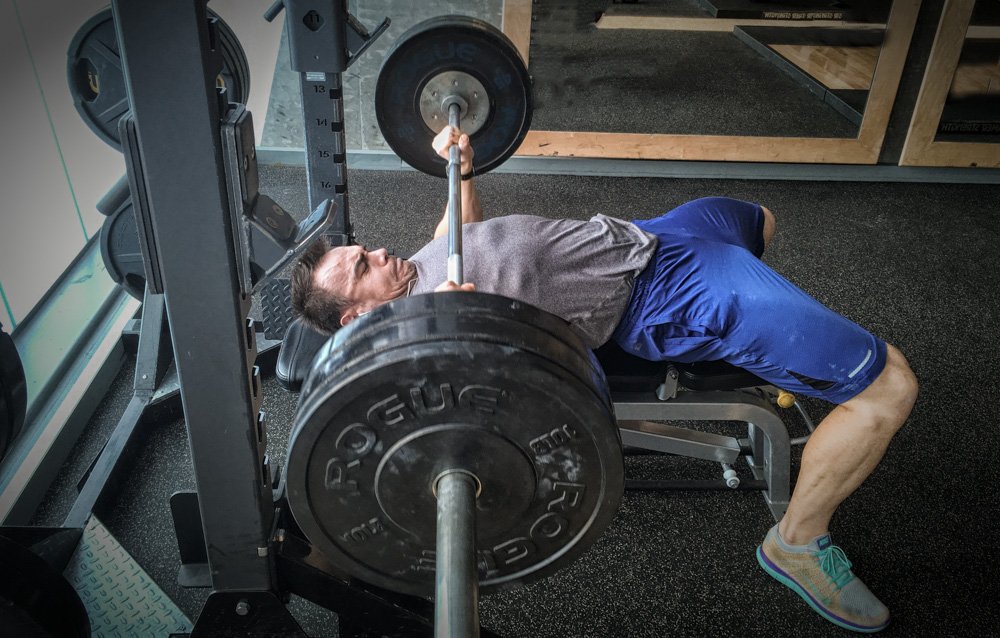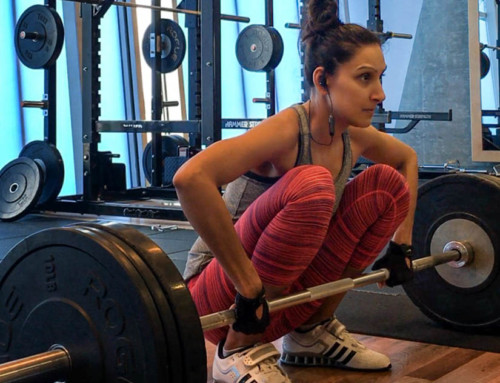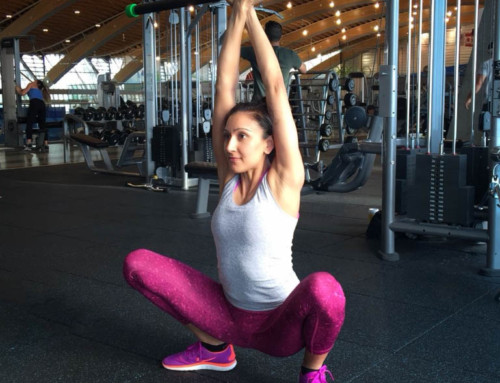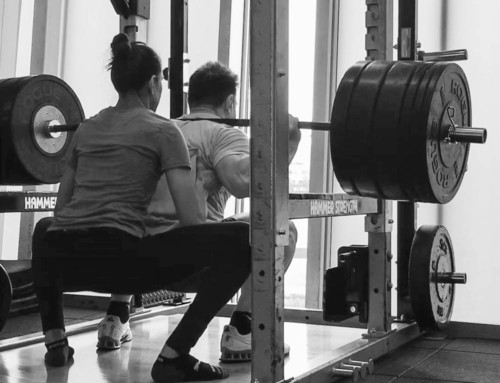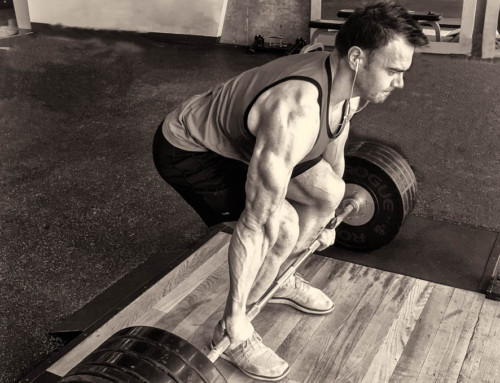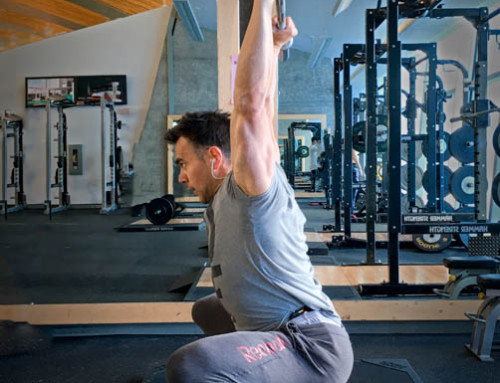We all know strength as an ability. On the surface, strength is associated with lifting heavy weights, having greater muscle mass, improved performance while looking more athletically fit. Though there are several varieties of strength, the one we’re going to focus on is the absolute kind. This version includes using maximal or just-below maximal loads (often referred to as one Rep Max – 1RM).
Using heavy weights improves neural drive while increasing muscle mass through myofibrillar hypertrophy.
Strong is Sexy is designed to improve absolute strength and neuromuscular functionality while building muscle and burning fat. This results in lean and athletic body with increased strength capacity.
Strong is Sexy for all
In order to not only gain strength, but also muscle mass while increasing caloric consumption during and after training sessions, we amalgamated several strength training methods into one program.
We also made it general enough to fit the needs and abilities of majority of our readers. This is something that can be used by trainees who are fairly new to the iron game, as well as for the intermediate lifters. Even members with extensive training experience may find progression useful if he/she is to crank up the intensity accordingly.
Whatever men can do, women can do the same, and for longer periods. This is an evolutionary adaptation as women are more geared towards endurance. However, everyone has the same body systems which engage by identifying the physical stress, sending out chemical messengers, recruiting muscle tissue and generating contractions. The energy for all movements is produced through three energy systems that are identical in both genders, with adenosine triphosphate (ATP) being a chemical energy carrier. Therefore, the same principles for strength training would and do apply to both genders.
Strength Methods
As mentioned elsewhere, heavy weights build strength. This is also referred to as Maximal Effort Method (MEM) which qualifies every time we use loads around 90-100% of 1RM. Such weights demand the body to produce full efforts which can only be completed for few repetitions, usually 1-3 in range. This is the ideal way to build strength, as the body responds to such high intensities by engaging everything it can in order to resist the stress and generate force. The results translate into steady progress by improving Central Nervous System (CNS) response and building muscle tissue. Because of high loads, MEM is not prescribed for novice lifters. Having said that, this program contains slow progression allowing a steady climb up the intensity ladder that will suit most training backgrounds.
The second method is using sub-maximal weights, and hence called Submaximal Effort Method (SEM). By using less intensity around 50-85% of 1RM, we can perform the exercise for longer, between 5-12 repetitions. Greater work volume of SEM also recruits and develops muscle fibers while making overall neuromuscular system more resilient to physical fatigue.
The final method is of explosive strength. Its called Dynamic Effort Method (DEM) and it focuses on the rate of force development (RFD), or power production. Power is an ability containing strength and speed components, where the weights (intensity) are lifted as fast as possible (speed). Because power is so demanding on the body, it initiates the largest muscle fibers to perform such tasks. To maximize speed, DEM often uses lower intensities (around 40-75% of 1RM) for only few repetitions (around 1-5) at each set. Many exercises can be adopted or designed to improve RFD, and this program has a specific segment within it to specifically address such biomotor ability.
How It Works
Any stress (physical or another kind) applied to the body is identified and engaged. By either:
- building resistance and overcoming it through adaptations or,
- over-exerting itself into severe fatigue with negative physiological consequences.
Now, within each initial response, the body improves on utilizing its already existing assets. This means using what you already have to a greater degree.
All of our body systems are at the “ready” stage, waiting to be called into action. However, if we don’t use these systems, the body gets a bit “slow” in engaging such processes. This is not a lazy thing on our part, but rather an efficient one.
Allow us to explain:
We know that the brain and the spinal cord that make up CNS are responsible for “activating” the muscle to produce any kind of body movement. This is done through motor units (MUs). A MU is made up of a nerve cell (neuron) that connects to the spinal cord with one end, and to a bunch of muscle (fast and slow fibers) on the other end. Each MU can contain (innervate) tens to hundreds muscle fibers.
When an electrical signal (Action Potential – AP) is generated from spinal cord about producing a certain movement, this AP travels down appropriate nerve cells and activates muscle fibers attached to it. The result is a contraction. To read up more on this topic, check out our “Stronger neuromuscular System – Brain to Muscle Connection” article.
By increasing our neural drive, we essentially improve our ability to activate more muscle fibers (recruitment/quantity), while increasing their contractility (rate coding/quality). The result is steady improvements in increased intensity, while engaging other body system involved in repair and recovery. This “greater muscle activation and stronger contractions” process does not immediately turned on, and it has to be worked towards in stages. Hence, the Strong is Sexy strength program.
The Program
The program is designed to produce greater CNS engagement by activating more available MUs using MEM, SEM and DEM. Through incremental stages, we will:
- carve our neuromuscular pathways, while
- practicing movement patterns,
- creating muscle memory and better technique.
- improve overall force production in a coordinated manner within working muscle areas (intramuscular coordination) as well as,
- the working cadence between different muscle groups (intermuscular coordination).
Now, people often mention about muscle growth (myofibrillar and sarcoplasmic hypertrophy). Though there will be some hypertrophy due to super-compensation, such progress comes after the initial neural adaptations. This is another evolutionary coded trait within us, as the body will do what it can with what it has prior to investing substantial capital (in form of energy and raw materials) in order to continue progress (becoming stronger by growing more tissue).
This program will focus on the first phase of strength gain, which are neural adaptations. It is a six-week training cycle that utilized three distinct components. Each component, will focus on each strength training method. The phase has two distinct training days that alternate in three weekly sessions. This makes a complete micro training cycle (microcycle) composed of 6 sessions, or 2 weeks.
Each training day has the following:
- Power Component
- Strength Component, and
- Accessory
The power component uses DEM to increase RFD through a steady practice of either power snatch or power clean exercise. These exercises are introductory derivatives of full olympic lifts, but still recruit and activate plenty of fast MUs.
The second portion focuses on MEM, but uses loads and rep ranges closer to the start of these parameters. 5X5 has been a popular and effective program for many, and our program uses some of its linear progression parameters. In order to avoid overreaching, each weekly session has designated specific intensity (as heavy, light and intensity) while following a steady progression of the four main lifts paired up in the upper-lower body configuration. Squats are paired with bench press, as deadlifts have been combined with push press. Number of different exercise movements have been tested, resulting in above mentioned combinations which produce ideal results for strength, metabolic disturbance and adequate recovery.
The accessories are the last portion of the training sessions which produce greater volume while using submaximal loads. This is the SEM method which focuses on further development of any lagging body areas. Due to large population sample pool of trainees that will go through this program, we’ve produced common accessory exercises that identify and cover majority of muscle areas often commonly found to be falling behind. The accessories are a flexible entity, and may be optional. Meaning that after main lifts, if you still have energy, then proceed as scheduled. But, if there is no gas left in the tank (so to speak), don’t push the body beyond that point and save it for the next session. The gauge of knowing when to press on the gas and when to slow down will come with experience by going through this program, one day at a time.
The program includes the following:
Day (I): Heavy Day
Main Lifts: 5 x 5:
set 1: 5 reps @75% of 1RM,
set 2: 5 reps @80% of 1RM,
set 3: 5 reps @85% of 1RM,
set 4: 5 reps @87.5% of 1RM,
set 5: 5 reps @90% of 1RM.
Day (II): Light Day
Main Lifts: 5 x 5: Speed
5 sets of 5 reps @75% of 1RM (with 60 seconds rest in between)
Day (III) Intensity Day
Main Lifts: 4 x 3/2/1/8+
Work up to 1 set of 5 reps @90% of 1RM.
If you’re not sure how to do that, follow the layout below:
2 sets of 5 (set 1 for 5 reps @75% of 1RM, set 2 for 5 reps @85% of 1RM)
Then:
1 set for 3 reps @90% of 1RM
1 set of 2 reps @95% of 1RM
Then:
1 set of 1@100% of 1RM (if successful, add 2.5% to your new 1RM number; if unsuccessful, attempt once more, before lowering the load to 97.5% of 1RM and attempting 1 rep),
Then:
1 set of 8+@75% of 1RM (the new 75% based on achieved increase in intensity, so would be 77.5% of old 1RM). The “+” means that perform as many reps as you can (minimum 8) at new 75% 1RM intensity while maintaining proper technique. If you can do 9, great, if 11 even better. If you are only able to put up 8 reps, that is also great. Whatever the level of force the body is able to produce – this is what we’re after.
Routine A:
Power: 3×3-6
Power Snatch
Main: 5×5 Protocol
HB Back Squat
Bench Press
Accessory List: 3 sets
Tries Press downs OR Close grip Push-Ups (10-15 reps)
Hyperextensions OR BB Goodmornings (10-12 reps)
Bentover DB Rows w/ Twist OR Pendlay Rows (10-12 reps)
Hanging Leg Raises OR Cocoons / V-Ups (8-12 reps)
DB Arnold Presses (10-12 reps)
Routine B:
Power: 3×3-6
Power Clean
Main: 5×5 Protocol
Deadlift
Push Press
Accessory List: 3 sets
Pull-Ups OR Chin-Ups (8-12 reps)
RBPAs (resistance band pull apart) OR RB/Cable Face Pulls (fewest sets to achieve 60 reps)
BB/DB Curls OR BB Drag Curls (10-12 reps)
Standing Russian Twists OR Lying Straight Leg Pendulums (8-12 reps / side)
Hang Snatch High Pulls (8-10 reps)
The accessories represent potential lagging muscles that may need extra attention. This does not mean that each session will have all of them, but only one or two.
Now that we’ve familiarized ourselves with the plan of action. Let’s go out and execute.
Good luck and happy strength gains!
Btw, be sure to stay connected with us! Either via social media (FB), comment below or e-mail us your questions and progress.

